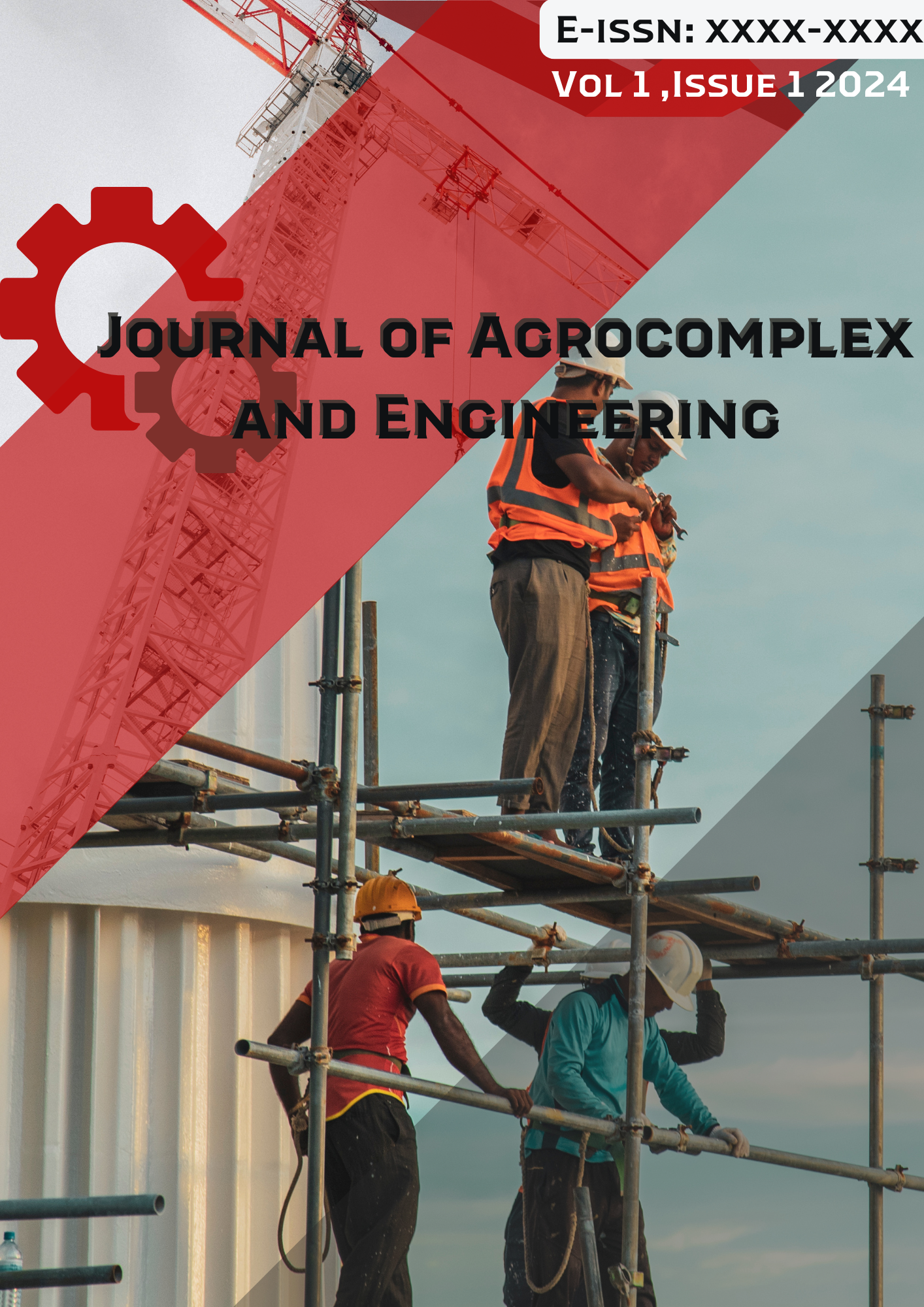Evaluation of Agroforestry Strategies in Climate Change Mitigation in Tropical Forest Areas
Keywords:
Agroforestry , Climate Change Mitigation , Carbon SequestrationAbstract
Purpose: This study investigates the role of agroforestry as a climate change mitigation strategy in tropical forest regions by integrating biophysical and socio-economic dimensions. The research seeks to quantify carbon sequestration potential, assess methodological consistency between field and remote sensing approaches, and evaluate livelihood co-benefits associated with agroforestry adoption..
Subjects and Methods: The study was conducted across three representative tropical landscapes, encompassing 150 permanent sample plots stratified by land-use type: multistrata agroforestry, shaded monocultures (cocoa/coffee), and conventional monocropping. Above- and below-ground biomass was measured using tree inventories and soil organic carbon sampling (0–100 cm depth, n = 450 samples). Remote sensing data (Landsat 8, Sentinel-2, and airborne LiDAR) were calibrated against field plots for landscape-scale carbon estimation. A household survey of 320 farmers was conducted, and econometric models—propensity score matching and difference-in-differences—were employed to assess livelihood impacts of agroforestry adoption. Bayesian hierarchical modeling and Monte Carlo simulations (10,000 iterations) were used to propagate uncertainties across scales.
Results: Multistrata agroforestry systems exhibited the highest carbon stocks, averaging 232.1 ± 16.1 Mg C ha⁻¹, compared with 173.2 ± 12.4 Mg C ha⁻¹ in shaded monocultures and 105.5 ± 9.3 Mg C ha⁻¹ in monocropping systems. At the landscape level, agroforestry expansion contributed a cumulative 2.1 Mt CO₂e sequestration over the decade (2013–2023). Remote sensing estimates demonstrated strong agreement with field data (R² = 0.82, mean bias = –0.3 Mg C ha⁻¹). Socio-economic analysis revealed that adopters of agroforestry practices earned USD 315 ha⁻¹ yr⁻¹ more than non-adopters while maintaining higher carbon stocks.
Conclusions: Agroforestry systems provide a scientifically robust and socially inclusive pathway for climate change mitigation in tropical forest areas. Their capacity to combine substantial carbon sequestration with livelihood enhancement underscores their value as a dual-benefit strategy. Findings highlight the need for supportive policies on land tenure, extension services, and carbon financing to enable agroforestry’s integration into national climate action plans and international carbon markets.
References
Bouzekraoui, H., El Khalki, Y., Mouaddine, A., Lhissou, R., El Youssi, M., & Barakat, A. (2016). Characterization and dynamics of agroforestry landscape using geospatial techniques and field survey: a case study in central High-Atlas (Morocco). Agroforestry Systems, 90(6), 965-978. https://doi.org/10.1007/s10457-015-9877-8
Castle, S. E., Miller, D. C., Ordonez, P. J., Baylis, K., & Hughes, K. (2021). The impacts of agroforestry interventions on agricultural productivity, ecosystem services, and human well‐being in low‐and middle‐income countries: A systematic review. Campbell Systematic Reviews, 17(2), e1167. https://doi.org/10.1002/cl2.1167
Douxchamps, S., Van Wijk, M. T., Silvestri, S., Moussa, A. S., Quiros, C., Ndour, N. Y. B., ... & Rufino, M. C. (2016). Linking agricultural adaptation strategies, food security and vulnerability: evidence from West Africa. Regional Environmental Change, 16(5), 1305-1317. https://doi.org/10.1007/s10113-015-0838-6
Duguma, L. A., Minang, P. A., & van Noordwijk, M. (2014). Climate change mitigation and adaptation in the land use sector: from complementarity to synergy. Environmental management, 54(3), 420-432. https://doi.org/10.1007/s00267-014-0331-x
Fady, B., Cottrell, J., Ackzell, L., Alía, R., Muys, B., Prada, A., & González-Martínez, S. C. (2016). Forests and global change: what can genetics contribute to the major forest management and policy challenges of the twenty-first century?. Regional Environmental Change, 16(4), 927-939. https://doi.org/10.1007/s10113-015-0843-9
Kapari, M., Hlophe-Ginindza, S., Nhamo, L., & Mpandeli, S. (2023). Contribution of smallholder farmers to food security and opportunities for resilient farming systems. Frontiers in Sustainable Food Systems, 7, 1149854. https://doi.org/10.3389/fsufs.2023.1149854
Keprate, A., Bhardwaj, D. R., Sharma, P., Verma, K., Abbas, G., Sharma, V., ... & Janju, S. (2024). Climate resilient agroforestry systems for sustainable land use and livelihood. In Transforming agricultural management for a sustainable future: climate change and machine learning perspectives (pp. 141-161). Cham: Springer Nature Switzerland. https://doi.org/10.1007/978-3-031-63430-7_7
Malhi, Y., & Phillips, O. L. (2004). Tropical forests and global atmospheric change: a synthesis. Philosophical Transactions of the Royal Society of London. Series B: Biological Sciences, 359(1443), 549-555. https://doi.org/10.1098/rstb.2003.1449
Muschler, R. G. (2015). Agroforestry: essential for sustainable and climate-smart land use?. In Tropical forestry handbook (pp. 1-104). Springer, Berlin, Heidelberg.
Mutengwa, C. S., Mnkeni, P., & Kondwakwenda, A. (2023). Climate-smart agriculture and food security in Southern Africa: A review of the vulnerability of smallholder agriculture and food security to climate change. Sustainability, 15(4), 2882. https://doi.org/10.3390/su15042882
Rapiya, M., Truter, W., & Ramoelo, A. (2024). The integration of land restoration and biodiversity conservation practices in sustainable food systems of Africa: a systematic review. Sustainability, 16(20), 8951. https://doi.org/10.3390/su16208951
Seymour, F., & Busch, J. (2016). Why forests? Why now?: The science, economics, and politics of tropical forests and climate change. Brookings Institution Press.
Sharma, P., Bhardwaj, D. R., Singh, M. K., Nigam, R., Pala, N. A., Kumar, A., ... & Thakur, P. (2023). Geospatial technology in agroforestry: status, prospects, and constraints. Environmental Science and Pollution Research, 30(55), 116459-116487. https://doi.org/10.1007/s11356-022-20305-y
Sileshi, G. W., Dagar, J. C., Nath, A. J., & Kuntashula, E. (2023). Agroforestry as a climate-smart agriculture: Strategic interventions, current practices and policies. In Agroforestry for sustainable intensification of agriculture in Asia and Africa (pp. 589-640). Singapore: Springer Nature Singapore. https://doi.org/10.1007/978-981-19-4602-8_18
Veste, M., Sheppard, J. P., Abdulai, I., Ayisi, K. K., Borrass, L., Chirwa, P. W., ... & Kahle, H. P. (2024). The need for sustainable agricultural land-use systems: Benefits from integrated agroforestry systems. In Sustainability of Southern African Ecosystems Under Global Change: Science for Management and Policy Interventions (pp. 587-623). Cham: Springer International Publishing. https://doi.org/10.1007/978-3-031-10948-5_21
Downloads
Published
Issue
Section
License
Copyright (c) 2025 Journal of Agrocomplex and Engineering

This work is licensed under a Creative Commons Attribution-ShareAlike 4.0 International License.






